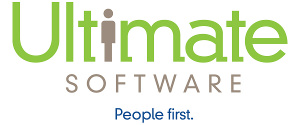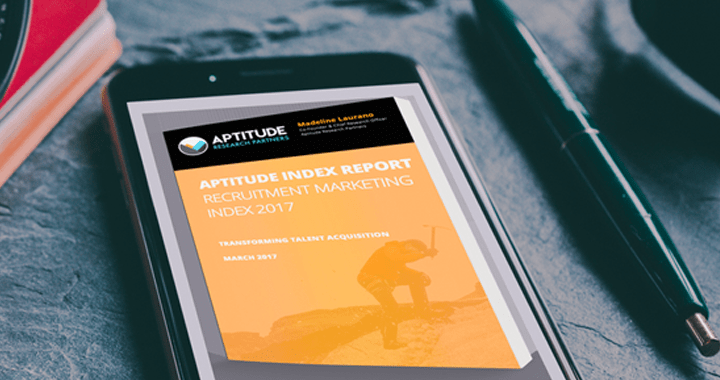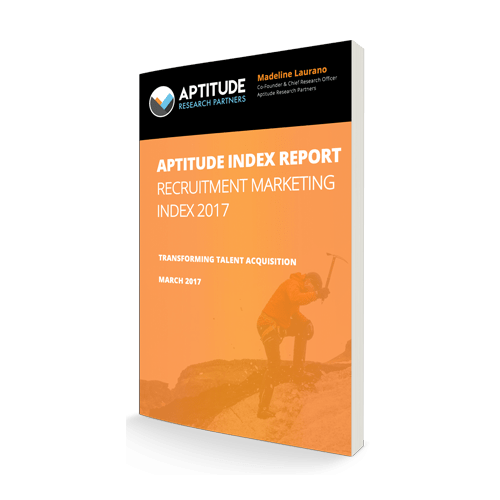In HR technology, competitive advantage is too often confused with how fast a solution provider innovates and launches new capabilities. Categories are created and products are enhanced with very little consideration for what customers actually want or need. The pressure to “speed up” has created confusion in a market that is already crowded and complex.
But, at this year’s HR Technology Conference, the tone seemed different. Solution providers are slowing down, being more thoughtful with product launches, and getting back to the basics. They are thinking about what will help customers improve the way they recruit, develop, and manage their workforce. They are thinking about the employee, the manager, and the candidate. And, while future-looking topics like AI, machine learning and robotics were undeniably mainstream, there was still a heavy focus on simplicity. Both traditional solution providers and startups are tackling fundamental areas of HCM such as assessments, performance management and recruitment. And, surprisingly, this is where much of the product leadership is happening…in the basics.
The simplicity at this year’s conference represents a refreshing shift in a market that has a history of overcomplicating even the most basic of processes. Below are some of the categories and providers that stood out this year:
Assessments
Assessments are a critical part of the hiring process with 79% of companies using some type of pre-hire assessment. Our research shows that assessments are top on the list of investments for companies this year. While stand-alone assessments are still on the rise, established suite providers and talent acquisition platforms are focusing heavily on this market- providing validated assessments and improving the candidate experience. Below are a few providers we are paying attention to:
- The Chemistry Group: One of the darlings of the Great New Tech session, The Chemistry Group is a next generation assessment provider taping into social profiles and rich candidate data to help employers make better hiring decisions.
- Cornerstone OnDemand: Cornerstone’s Selection solution allows companies to uncover candidates who are the right fit at any point of the application. Using realistic job previews, job simulations, and assessments, Cornerstone Selection makes it easier to exclude applicants early in the process.
- HireVue: For anyone that has ever wanted a shorter, simpler, and more candidate-friendly assessment, HireVue’s digital assessment will meet those needs. Its’ assessment product significantly improves the way that employers can identify the right fit while improving the candidate experience.
- Infor: Assessments are a priority for Infor’s HCM suite. The provider has invested heavily in behavioral and cultural assessments and is pushing these assessments in the rest of its products. It does this so seamlessly that companies are able to get a better grasp of areas such as flight risk, predictive performance, and team development.
- SMD: SMD (Strategic Management Decisions) was one of the most interesting briefings we had last week. This company is a cloud-based survey, assessment, and analytics provider that promises clients a 10% turnover reduction guarantee.
Performance Management
Companies are finally replacing traditional performance management practices and technology with solutions that provide ongoing feedback, enhanced collaboration, and a positive employee experience. Providers are weaving performance in the form of recognition, wellness, and communication. And, the result is happier employees, a stronger company culture, and improved business outcomes. Below are a few providers, we believe are adding value to this market:
- ADP: With a new take on performance management and an improved manager and employee experience, ADP is reimaging performance management and enabling greater transparency and feedback.
- HighGround: Another startup in the Next Great Technology session, HighGround links performance and engagement by offering companies one platform for performance, recognition and employee communication.
- GuideSpark: Companies that effectively communicate with employees are 4 times more likely to engage employees and 3 times more likely to improve quality of hire. GuideSpark’s communication platform helps companies such as Lionsgate to replace broken performance management systems with ongoing conversations, content and analytics.
Recruitment Marketing
Often referred to as the “pre-applicant platform,” these solutions manage outbound sourcing, inbound recruitment marketing, and employer branding. They integrate with any ATS but essentially, they do what the ATS has never been able to do. Below are a few providers that impressed us last week:
- Clinch: One of the best products I have come across this year in the recruitment marketing space (and another nominee in the Next Great Technology session). Clinch helps recruiters think more like marketers by helping them easily publish content, attract passive talent, and understand what sources are the most valuable.
- Entelo: As a leading talent acquisition provider, Entelo is the one provider that offers a unified talent pipeline. They offer outbound recruitment to help companies attract talent and inbound recruitment (through their award-winning Stack product) to help companies rank and prioritize resumes.
- Phenom People: Calling itself a “Talent Relationship Platform”, Phenom People differentiates itself by using AI to learn about an individual and the touchpoints an organization makes and then provides insights back to recruiters and candidates.
- Qwalify: Another provider that was nominated as a Great New Technology at the conference, Qwalify is much more than a talent community. Its’ Talent Dojo solution is an engagement-based recruitment platform which helps companies communicate with current and future talent relationships.
- SmashFly: Smashfly sets the bar high in recruitment marketing. It is helping organizations through a complete recruitment marketing platform of inbound recruitment marketing, outbound sourcing and employer branding. It offers the scalability, services, and security that enterprise companies are demanding.
- Talemetry: Talemetry leverages a company’s existing recruiting system investment and deeply integrates it with a unified modern recruitment marketing platform. The recruitment marketing solution is now offering auto-sourcing and has strengthened its services over the past year.
Applicant Tracking Systems
Today, the talent acquisition system remains the backbone of a modern recruitment function. Yet, Aptitude Research found that two out of five companies are still unhappy or indifferent with their provider. And…companies are only using 3% of its functionality. So, in the world of recruitment, the need for simplicity has never been greater. Last week, we met with ATS providers that are breaking the mold. Below are our list of some of the providers that impressed us in recruitment:
- iCIMS: As a provider that has always prioritized customer satisfaction, iCIMS truly understands what clients want from an ATS. The iCIMS Mobile Hiring Manager App. enables hiring managers to take immediate action on job candidates from virtually anywhere, alleviating “log jams” in the hiring process and reducing time to fill.
- Jobvite: Jobvite is one of the leading talent acquisition providers in the market and differentiates itself by offering solutions to handle every aspect of talent acquisition including recruitment marketing, ATS, and onboarding functionality. Its’ priorities over the next 12 months include mobile, analytics and collaborative hiring.
- Lever: The fast-growing ATS provider is only 3 years old but has already secured itself as a staple in the talent acquisition tech community. While many providers have taken steps to offer a CRM module as an option in their product portfolio, Lever includes its CRM (its Nurture product) and ATS as a single solution.
- ZipRecruiter: One of the greatest success stories of the past year has been the growth of ZipRecruiter. Well known for its marketing and advertising, ZipRecruiter is more than just a job distribution tool. It offers companies in the SMB market, a full ATS to help with high-volume, quality of hire and velocity.
Artificial Intelligence
It is hard to talk about this year’s conference without mentioning the role of AI. Companies want solutions that can give them greater insight on the individual and greater communication with candidates and employees. A few of the companies leading the way in AI include:
- gr8People: This provider is offering recruitment automation through every stage of the talent acquisition process from recruitment marketing to onboarding.
- Olivia: The big topic of the conference was Olivia, the bot that asks candidates a few simple questions and then sets them on a more personalized experience in the hiring process.
- Works Applications: The leading Japanese provider is leveraging bots to better engage candidates and help provide feedback on the hiring process.
We will follow these providers and more this year and next and will be profiling them in our upcoming Aptitude Index reports. Also, we would love to hear from you about what providers were most interesting to you at the HR Technology Conference.







